
The Economy of Japan is a highly developed/advanced social market economy, often referred to as an East Asian model. It is the 4th-largest economy in the world by nominal GDP behind the United States, China, and Germany and the 4th-largest by purchasing power parity (PPP).

The yen is the official currency of Japan. It is the third-most traded currency in the foreign exchange market, after the United States dollar and the euro. It is also widely used as a third reserve currency after the US dollar and the euro.
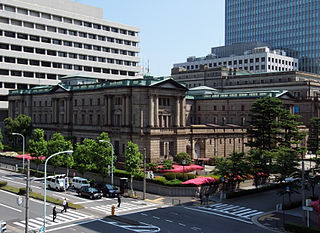
The Bank of Japan is the central bank of Japan. The bank is often called Nichigin (日銀) for short. It is headquartered in Nihonbashi, Chūō, Tokyo.
In macroeconomics, hard currency, safe-haven currency, or strong currency is any globally traded currency that serves as a reliable and stable store of value. Factors contributing to a currency's hard status might include the stability and reliability of the respective state's legal and bureaucratic institutions, level of corruption, long-term stability of its purchasing power, the associated country's political and fiscal condition and outlook, and the policy posture of the issuing central bank.

A country's gross government debt is the financial liabilities of the government sector. Changes in government debt over time reflect primarily borrowing due to past government deficits. A deficit occurs when a government's expenditures exceed revenues. Government debt may be owed to domestic residents, as well as to foreign residents. If owed to foreign residents, that quantity is included in the country's external debt.
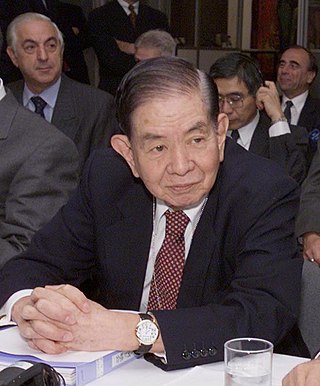
Masaru Hayami was a Japanese businessman, central banker, the 28th Governor of the Bank of Japan (BOJ) and a Director of the Bank for International Settlements (BIS).
Kazuhide Uekusa is a Japanese economist, economic analyst, former senior economist at Nomura Research Institute, and chairman of the Three-Nations Research Institute. He was arrested for sexual offenses in 2004 and 2006.
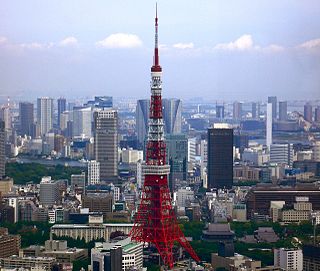
The Japanese asset price bubble was an economic bubble in Japan from 1986 to 1991 in which real estate and stock market prices were greatly inflated. In early 1992, this price bubble burst and Japan's economy stagnated. The bubble was characterized by rapid acceleration of asset prices and overheated economic activity, as well as an uncontrolled money supply and credit expansion. More specifically, over-confidence and speculation regarding asset and stock prices were closely associated with excessive monetary easing policy at the time. Through the creation of economic policies that cultivated the marketability of assets, eased the access to credit, and encouraged speculation, the Japanese government started a prolonged and exacerbated Japanese asset price bubble.

Yōichi Masuzoe is a Japanese politician who was elected to the position of governor of Tokyo in 2014 and resigned in June 2016 due to the misuse of public funds. He was previously a member of the Japanese House of Councillors and the Japanese Minister of Health, Labor, and Welfare. Before entering politics, he became well known in Japan as a television commentator on political issues.

Kozo Yamamoto is a former Ministry of Finance official, Japanese politician of the Liberal Democratic Party (LDP), a member of the House of Representatives in the Diet. He served as State Minister in charge of: Regional Revitalization; Regulatory Reform; Administrative Reform; City, People, Job-Creation; and Civil Service Reform from 2016 to 2017. Previous posts include Vice Minister of Economy, Trade, and Industry, Chairman of the Judicial Affairs Committee of the House of Representatives, Chairman of the Special Commission on Consumer Issues, and Chairman of the Special Commission on Regional Revitalization.

Yodobashi Camera Co., Ltd. is a major Japanese retail chain specializing in electronics, PCs, cameras and photographic equipment.

The Lost Decades is a lengthy period of economic stagnation in Japan precipitated by the asset price bubble's collapse beginning in 1990. The singular term Lost Decade originally referred to the 1990s, but the 2000s and the 2010s have been included by commentators as the phenomenon continued.
The "Truly Strong Universities" is a ranking of Japan's top 100 universities by publisher Toyo Keizai released annually in its business magazine of the same name.

Haruhiko Kuroda is a Japanese banker and a former Ministry of Finance government official who served as the 31st Governor of the Bank of Japan (BOJ) from March 2013 to April 2023 and is currently a Professor at the National Graduate Institute for Policy Studies (GRIPS). From 2003 Mr Kuroda served as Special Advisor to the Cabinet of Prime Minister Koizumi, while teaching economics and finance as a Professor at the Hitotsubashi University Graduate School of Economics. He was formerly the President of the Asian Development Bank from 1 February 2005 to 18 March 2013.
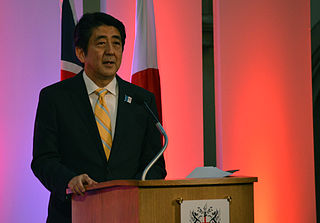
Abenomics refers to the economic policies implemented by the Government of Japan led by the Liberal Democratic Party (LDP) since the December 2012 general election. They are named after Shinzō Abe (1954–2022), who had been appointed as Prime Minister of Japan on his second term from 2012 to 2020. Abe was the longest-serving prime minister in Japanese history. After Abe resigned in September 2020, his successor, Yoshihide Suga, stated that his premiership would focus on continuing the policies and goals of the Abe administration, including the Abenomics suite of economic policies.
Takafusa Nakamura was a Japanese economist.
Basic Policies for Economic and Fiscal Management and Reform, commonly referred to by a term which literally translates to "Big-Boned Policy", is a set of policy guidelines used by the Japanese government to draft policy on economic and fiscal management. First proposed by the Liberal Democratic Party in 2001, it is formulated annually by the Council on Economic and Fiscal Policy. The initiative was abandoned by the Democratic Party of Japan in 2010, but revived in 2013 under the Shinzō Abe's administration.

Naomichi Suzuki is a Japanese politician who currently serves as Governor of Hokkaidō. He previously served as mayor of Yūbari city for two consecutive terms from 2011 to 2019. He had also served in Regional Sovereignty Strategy Office of Cabinet Office and as a chief of General Affairs Division in General Affairs Department at Tokyo Governor's Office.
Novel Coronavirus Expert Meeting is a Japanese advisory body established in the New Coronavirus Infectious Diseases Control Headquarters of the Japanese Cabinet.
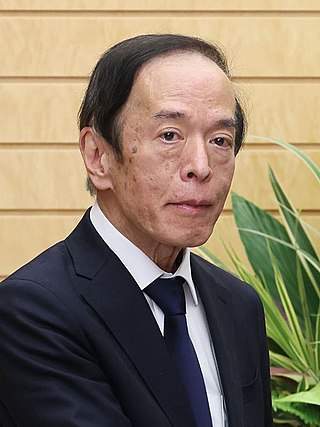
Kazuo Ueda is a Japanese economist who has been serving as the 32nd Governor of the Bank of Japan (BOJ) since April 2023.
















